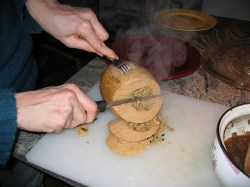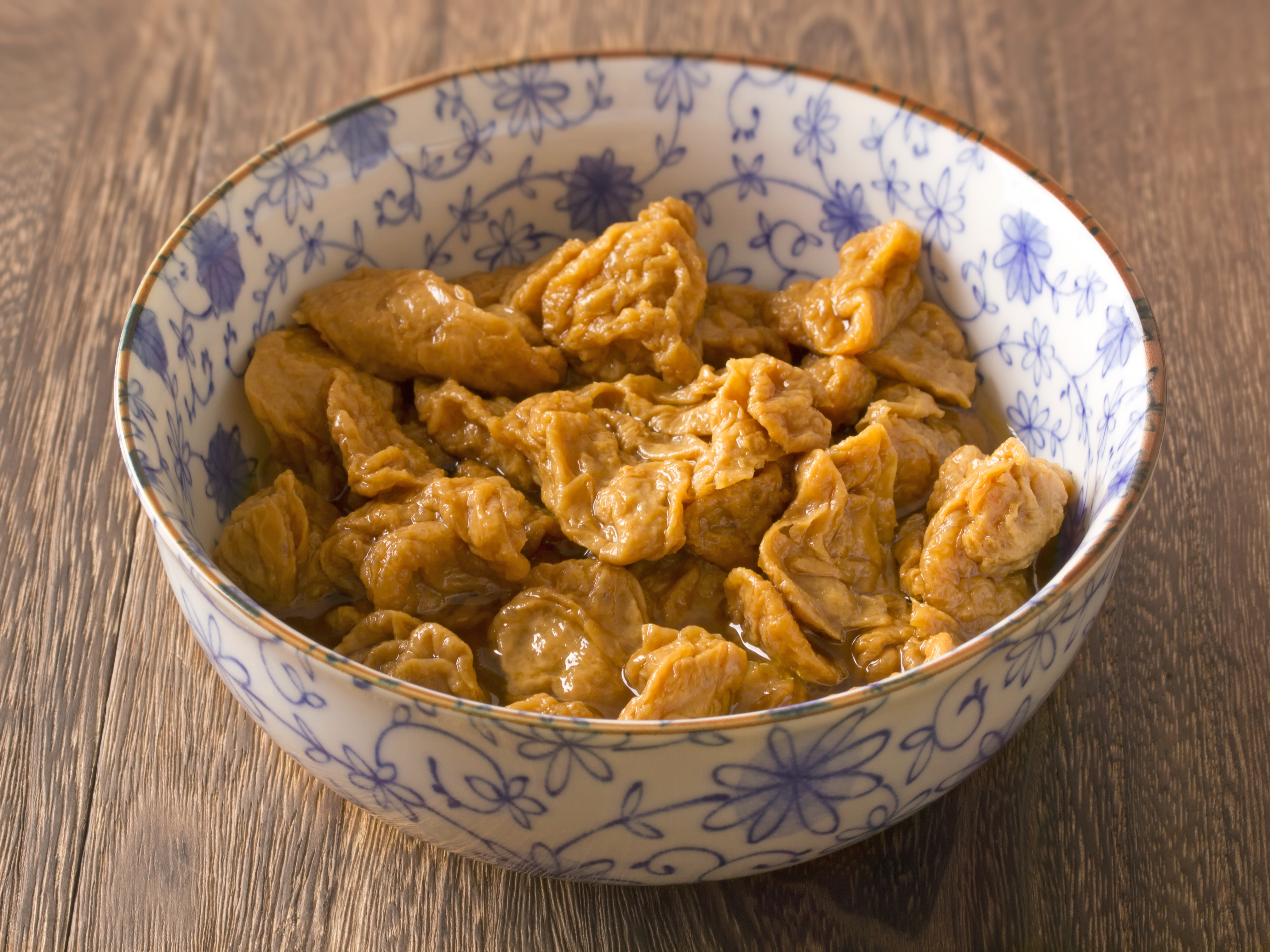
Jon StarbuckTofurky time!
There comes a time in every would-be vegan’s life when the question arises: to fake it or not to fake it? I’m talking about meat, and not meat meat, you guys — fake meat: various slurries concocted from beans, soy, mushrooms, and vital wheat gluten and shaped to resemble burgers, hot dogs, meat loaves, and sausages. And we mustn’t forget the other substitutes, either: vegan mayonnaises, butters, eggs, milks, and (shudder) cheeses.
So, to fake it or not to fake it? Do I need them as a protein source? Do they taste remotely like my ham ‘n’ eggs from the days of yore? Or is that missing the point of these convenience foods entirely?
Before I set out with three friends to eat a strictly vegan diet for a month, my position on fake animal products was mixed at best. I’ve been known to order a veggie burger just because I didn’t feel like beef that day, and I actually like pretty much every variety of milk substitute out there. But imposter hot dogs? Tofurky? What’s the point? I’d rather just enjoy the essence of grains, beans, and fungi for themselves. Otherwise, if you’ll pardon the expression, it’s like putting lipstick on a pig, then also putting that pig in a pair of Spanx and a sequined dress and making her trot around on Dancing with the Stars. Is it any wonder if she doesn’t make the final round?
Why not just stick to tofu, that agreeable slab that soaks up coconut curry and barbecue sauce with equal aplomb and cannot be mistaken for anything other than what it is? As my fiancé, Ted, put it: “It’s kind of like the uncanny valley. The closer these foods get to the real thing, the creepier they seem.”
But then we jumped into vegan month, and I started to appreciate the place of the imitation meat slab. As much as I was enjoying the newfound prominence of plant-based proteins on my plate, something was just … missing. A certain texture, maybe, or that umami savory flavor so central to meats. I found myself wanting something more than lentils and quinoa. Something familiar. Something like sausage. Maybe this desire goes away after a longer stay in Veganville, but at 3.5 weeks in, I was still feeling it.
So, for a closer look, I took a spin around the Field Roast Grain Meats headquarters, which happens to be right here in Seattle. Field Roast’s meat-free sausages, roasts, frankfurters, lunchmeats, and gravies have so routinely cropped up in the raves of other non-carnivores this month, I figured that if anyone has this fake-meat stuff down, it’s these guys.
Malcolm Lee, the company’s vice president of operations (and son of its founder, David Lee) cheerfully suited me up in a white jacket and hairnet for a closer look at the whole endeavor. We stepped into the main processing chamber: It was clean, bright, sweet-smelling, and nothing at all like a set from an ’80s-era slasher flick called Slaughterhouse II: Return of the Meat Hook. That day was sausage day. In one corner, machines mixed a huge batch of vital wheat gluten (the plant protein behind seitan as well as many of Field Roast’s products); in another, a hot tub-sized vat churned a mixture of apple chunks, sage, and Yukon gold potatoes. An employee walked by and tossed in a bowlful of aromatic chopped garlic. Yum.

Field Roast Grain Meat Co.Here’s how the sausage is made …
“We’re really half meat plant, half bakery,” Lee told me as we moved on to another vat containing the union of the previous two containers. From there, the, er, meat-dough gets squeezed through an extruder (tee-hee) and into plastic sausage casings, then cooked, cooled off in a gentle shower, and packed up for shipment. On a good day, about 86,400 grain meat sausages are born right here and distributed to the vegan population at large (and plenty of non-card-carrying vegans, too).
I asked Lee why the company opted to imitate common meat products rather than striking out in its own bold direction (Gluten Bites®? Chewy Not-Meat Nuggets®?). “I think people are just more familiar with them,” he said thoughtfully, noting that sometimes, hey, you just want to cook a hot dog. Customers already know how to deal with meat loaf and roast and sausage. If you’ve grown up eating meat, like so many of us have, these pinch-hitters slip right into the brain space we’ve already reserved for, say, when and how to make a Bolognese sauce.
OK, OK, but how does it taste? That night was our last dinner/support group with our friends Matt and Laura, so I decided to serve a few fake meat samples along with our regularly scheduled main dish, baked ratatouille. First up: vegan pate, made from a base of walnuts, mushrooms, and wheat gluten. The consensus: “Rich,” “Smoky,” and “Pretty good!” The chunk disappeared fast. Second: the hazelnut cranberry roast wrapped in a puff pastry, seemingly designed to make vegans feel less left out around a festive holiday table. Again, “Pretty good!” I don’t know if I’d ever crave something like this, but then again, I don’t usually go for meat wrapped in pastry anyway.
And those sausages: They’re certainly greasy. Chewy and crumbly, the texture is about right. “Field Roast comes very close to satisfying that deep savory craving,” said Ted — “and they avoid the quivering, squishy artificiality of a lot of fake meats by playing up the innate strengths of their ingredients.”
Still, he added, “Without the pop of the casing, the complex interplay of fatty-meaty textures? It ain’t sausage.”
Alas, it’s true. But for newbie vegans, I’m coming down on the side with more protein options.
Today is day 29 of the 31-day vegan experiment. Tune in next week for lessons learned, highs and lows, and most importantly, what happens next?



